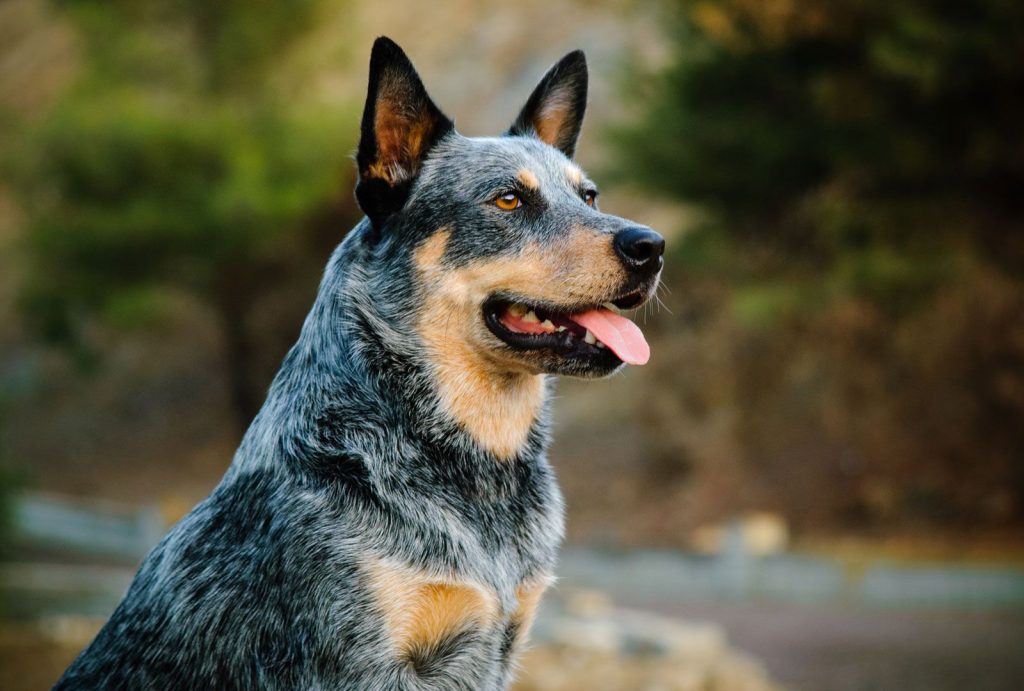Bluey and her family are Australian Cattle Dogs, commonly called Blue Heelers. As a trainer-turned-writer who’s worked with dozens of herding breeds, I can tell you Blue Heelers are brilliant, energetic problem-solvers—exactly what you see on the show. In this guide, I’ll break down what makes this breed special, how they match the series’ personality, and what real-life owners should know before bringing one home.
What Is Bluey’s Dog Breed?
Bluey is an Australian Cattle Dog (ACD), often nicknamed the Blue Heeler for the breed’s speckled “blue” coat and historical habit of nipping the heels of cattle. The character’s family name—Heeler—is a nod to that heritage. While the show leans into the fun, it’s surprisingly accurate about key traits: sharp intelligence, tireless energy, strong family bonds, and a playful spirit.
Key identifiers:
- Medium-sized, muscular build
- Short double coat: blue-mottled or blue-speckled; there’s also a “red heeler”
- Upright ears, alert expression, agile movement
- Famous for stamina and a “ready-to-work” attitude
If you’re comparing search terms, “what dog breed is Bluey,” “Bluey dog breed,” and “Blue Heeler breed” all point to the same breed: Australian Cattle Dog.
:max_bytes(150000):strip_icc()/australian-cattle-dog-puppy-2000-061c295069d64d60a34d6e98257fedbe.jpeg)
Origin And History Of The Blue Heeler
The Australian Cattle Dog was developed in 19th-century Australia to handle long-distance droving in harsh conditions. Breeders crossed hardy collie-type dogs with Australia’s native Dingo, adding breeds like the Dalmatian and possibly Kelpie to fine-tune endurance, silence while working, and loyalty to handlers. Major kennel clubs recognize the ACD with detailed standards that emphasize athleticism, resilience, and a weatherproof coat.
Why the “blue” color? Black hairs interspersed with white create a blue-mottled effect. It’s not actually blue—more like slate-gray or steely speckling that looks blue from a distance.
Temperament And Personality In Real Life
From my experience training Blue Heelers, the show captures their essence: clever, cheeky, and deeply people-oriented. But there are real-life nuances.
What to expect:
- High intelligence: They learn fast—and learn your routines even faster.
- Strong work drive: Without a “job,” they’ll invent one, like herding kids or guarding toys.
- Loyal and watchful: Often form a tight bond with one or two people.
- Confident and bold: Socialization is essential to keep that confidence friendly.
Anecdote: One client’s Heeler learned to open the pantry after watching for a week. We turned that curiosity into a trick routine, using puzzle feeders and scent games. Lesson: channel brains before mischief starts.
Tip to remember: A tired Heeler is a happy Heeler, but “tired” means mentally satisfied, not just physically exercised.

Exercise, Training, And Mental Stimulation
If you’re drawn to Bluey, make sure your lifestyle fits a high-energy working breed.
Daily needs:
- Exercise: 60–90 minutes of varied activity (running, hiking, structured fetch)
- Training: 10–20 minutes of obedience or tricks, broken into short sessions
- Brain work: Puzzle feeders, scent boxes, hide-and-seek, agility foundations
- Jobs: Rally, herding, treibball, disc, or urban mushing for advanced owners
Training keys:
- Use positive reinforcement and clear boundaries
- Start early socialization with people, dogs, sounds, and surfaces
- Teach impulse control: “leave it,” “place,” and calm greetings
- Rotate toys and games to prevent boredom
Mistakes to avoid:
- Only doing repetitive fetch—mix it up to prevent over-arousal
- Skipping rest days; structured rest helps prevent injury and burnout
- Underestimating zoomies indoors—set up safe play zones
:max_bytes(150000):strip_icc():focal(1239x812:1241x814)/what-kind-of-dog-is-bluey-2000-7a285425a7be48ca9149a81e044c4a9c.jpg)
Health, Lifespan, And Care Tips
With good care, Australian Cattle Dogs typically live 12–15 years. As a hardy working breed, they’re generally healthy, but proactive care matters.
Common considerations:
- Orthopedic: Hip/elbow dysplasia; maintain lean body condition and joint-friendly exercise
- Eyes: Progressive retinal atrophy (PRA) screening recommended
- Deafness: Congenital deafness can occur; ask breeders about BAER testing
- Skin/coat: Minimal grooming—weekly brushing; seasonal shedding
- Dental care: Daily chews or brushing to prevent tartar buildup
Vet-backed best practices:
- Choose breeders who health-test parents (hips, elbows, eyes, hearing)
- Feed a balanced diet tailored to activity level
- Cross-train to protect joints: swimming, low-impact conditioning
- Schedule annual wellness exams and vaccinations per veterinary guidance
Is A Blue Heeler Right For Your Family?
The show portrays Bluey as a fantastic family companion—and that can be true. The real-life match depends on your time, structure, and expectations.
Best fits:
- Active households that enjoy daily outdoor time
- Owners committed to training and enrichment
- Families who love games, projects, and clear routines
Think twice if:
- You prefer a couch-first lifestyle
- You have limited time for training and exercise
- You’re not ready to manage herding tendencies around small kids
Family tip: Teach kids to stop and “be a tree” if play gets too mouthy, and give your Heeler appropriate outlets like tug, flirt poles, and retrieve games with rules. With structure, they’re clever, comedic sidekicks—very Bluey-like.
How ‘Bluey’ Boosted Interest In The Breed
Searches for “what dog breed is Bluey” and “Blue Heeler dog” spiked alongside the show’s popularity. With any media-driven demand, responsible ownership matters. Breed clubs and veterinary professionals emphasize:
– Researching the breed’s needs before adoption
– Meeting adult Heelers to understand energy levels
– Prioritizing ethical breeders or reputable rescues
– Committing to training plans from day one
This media moment is a gift if it leads to better-informed matches between families and dogs—just like the show models empathy, problem-solving, and play.
FAQ’s
Is Bluey a Blue Heeler or Australian Cattle Dog?
Both. “Blue Heeler” is the common nickname for the Australian Cattle Dog with a blue-mottled coat.
Are Blue Heelers good family dogs like in the show?
Yes, with structure. They thrive with training, exercise, and clear boundaries. Without those, they can become mouthy or herdy.
How much exercise does a Blue Heeler need daily?
Plan for 60–90 minutes of physical activity plus mental stimulation like puzzles or training games.
Do Australian Cattle Dogs shed a lot?
They have a short double coat and do shed, especially seasonally. Weekly brushing helps; expect heavier shedding once or twice a year.
What health tests should I ask a breeder about?
Hips, elbows, eye exams (including PRA), and BAER hearing tests are standard for responsible breeding.
Can Blue Heelers live in apartments?
Yes, if you commit to daily exercise, enrichment, and training. Space matters less than consistent outlets for energy.
Are Blue Heelers aggressive?
They’re not inherently aggressive but are bold and protective. Proper socialization and training typically produce confident, friendly adults.
Wrap-Up
So, what dog breed is Bluey? She’s an Australian Cattle Dog (Blue Heeler)—smart, spirited, and endlessly playful. If you love her energy on-screen, be ready to match it with real-life structure: daily exercise, brain games, socialization, and positive training. Do your homework, meet the breed, and create routines that channel that brilliant mind into fun and connection.
I’ve loved dogs all my life and have cared for many different breeds over the years. Here, I share simple tips, stories, and helpful advice for all dog lovers. Whether you’re a new pet parent or a lifelong dog fan, you’ll find something useful and fun on my site.


